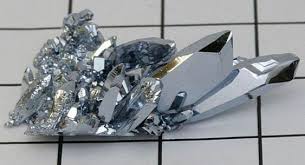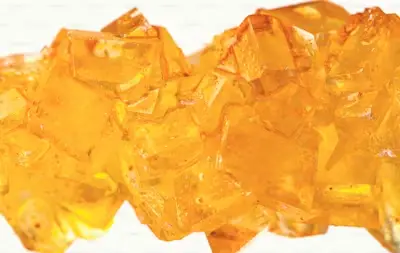Californium: The Super-Heavy Metal You’ve Probably Never Heard Of.
Californium is perhaps the most noteworthy and costly component on the periodic table. Named after the College of California, where it was first incorporated, californium (image Cf) is a radioactive metallic compound component with a nuclear number of 98. It has a place with the actinide series and is perhaps the heaviest component that can be delivered misleadingly. The revelation of californium in 1950 by researchers Stanley Thompson, Glenn Seaborg, Kenneth Road, and Albert Ghiorso denoted a critical achievement in nuclear research. We should investigate what makes this component so special and costly, where it is found, the innovation behind its creation, and its practical use.

What is Californium?
Californium is an engineered component and does not happen normally on Earth in any calculable sums. It is delivered through a progression of perplexing nuclear reactions in molecule gas pedals or nuclear reactors. The component is profoundly radioactive and transmits neutrons when it decays, making it significant for a few logical and modern applications. Californium’s most normal isotope, Californium-252, is particularly huge because of its capacity to emanate neutrons, an element that empowers it to act as a strong neutron source.
Why is Californium So Expensive?
Californium is possibly one of the most costly materials on The planet, with a price that can reach $27 million for each gram. The justification for this excessive cost lies in its production process. Californium cannot be mined or extracted from natural sources. Instead, it is made through an extremely time-consuming and costly method involving bombarding curium (another rare element) with neutrons in a nuclear reactor. It takes years of controlled reactions to produce even a few milligrams of californium, and specialized equipment is required for its handling due to its radioactive nature.
Notwithstanding the difficulties, Californium has a short half-existence of 2.6 years, implying that it decays moderately rapidly, which restricts its accessibility and further drives up the cost.
Where is Californium found?
Since californium does not exist normally in huge amounts, it is tracked down just in a couple of profoundly controlled conditions. Most of the world’s stockpile of californium is created at the Oak Ridge National Laboratory in Tennessee, USA, and the Research Institute of Atomic Reactors in Russia. These offices are outfitted with an important foundation to securely deliver and store radioactive isotopes. Because of the uncommonness of offices fit for creating californium, its accessibility is restricted, adding to its significant cost.
There have been tales that Californium and Curium are found in Africa in a town in Borno state Nigeria however, that is a bogus case since Californium-252 is a synthetic, or man-made chemical element, that is to say, the element is not found naturally occurring in nature, but rather produced artificially in a research center by a nuclear reactor.
Californium (Cf — 252) is an engineered, or man-made synthetic component, in other words, the component is not found in nature but rather delivered falsely in a research center by a nuclear reactor.
The name californium is derived from “California”, which is the name of the state in the United States of America where the component was first found and orchestrated.
A few used search engine options and also reached out to various contacts to verify the presence of Californium in Borno state however everything turned out negative for there is no freely known place where the component can be found or handled in the state.
The Technology Behind Its Production
Californium is primarily produced by bombarding curium-248 with neutrons in a nuclear reactor. This interaction makes curium-249, which is then subjected to additional neutron bombardment, in the end prompting the production of californium-252. The innovation associated with this process is very modern, requiring high-energy reactors and exact control of neutron transition. Once delivered, californium should be painstakingly taken care of and put away because of its radioactive properties, which present serious health risks.
Uses of Californium
Despite its high cost and complexity in production, californium has several important applications:
- Neutron Source: Californium-252 is an excellent source of neutrons, making it valuable in neutron radiography, where it is used to inspect aircraft parts, weapons systems, and other critical components for defects.
2. Nuclear Reactor Startup: The element is used to help initiate nuclear fission reactions in some nuclear reactors, as it can efficiently emit neutrons to start the chain reaction.
3. Medical Applications: Californium is used in cancer treatment, specifically in brachytherapy for targeting tumors. Its neutron-emitting properties allow it to be used for neutron therapy, a method used to treat certain types of cancers.
4. Oil Exploration: In the oil industry, californium is used in neutron activation analysis to detect layers of oil and water in oil wells. Its neutron-emitting capabilities make it an essential tool for geological surveys and resource extraction.
5. Research in Physical Science: Californium is also used in scientific research to study the properties of heavy elements and for the synthesis of even heavier elements, contributing to advancements in nuclear science.
Californium is a rare, synthetic element that plays a crucial role in industries and scientific research despite its high cost. The complexity and time required to produce it, coupled with its critical applications in neutron-based technologies, make it one of the most valuable elements on Earth. From aiding in medical treatments to helping with oil exploration, californium contributions far exceed its minute quantities.

